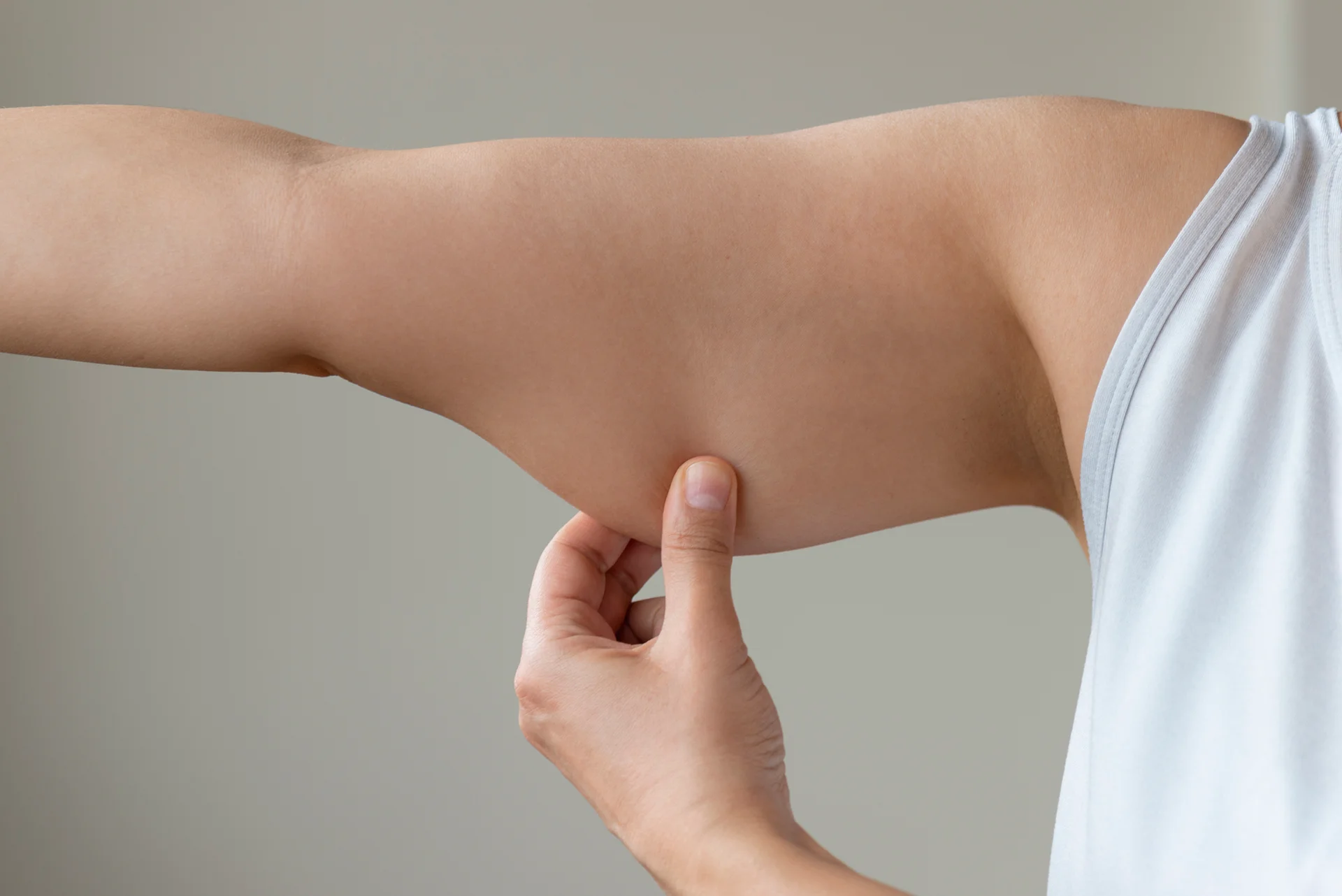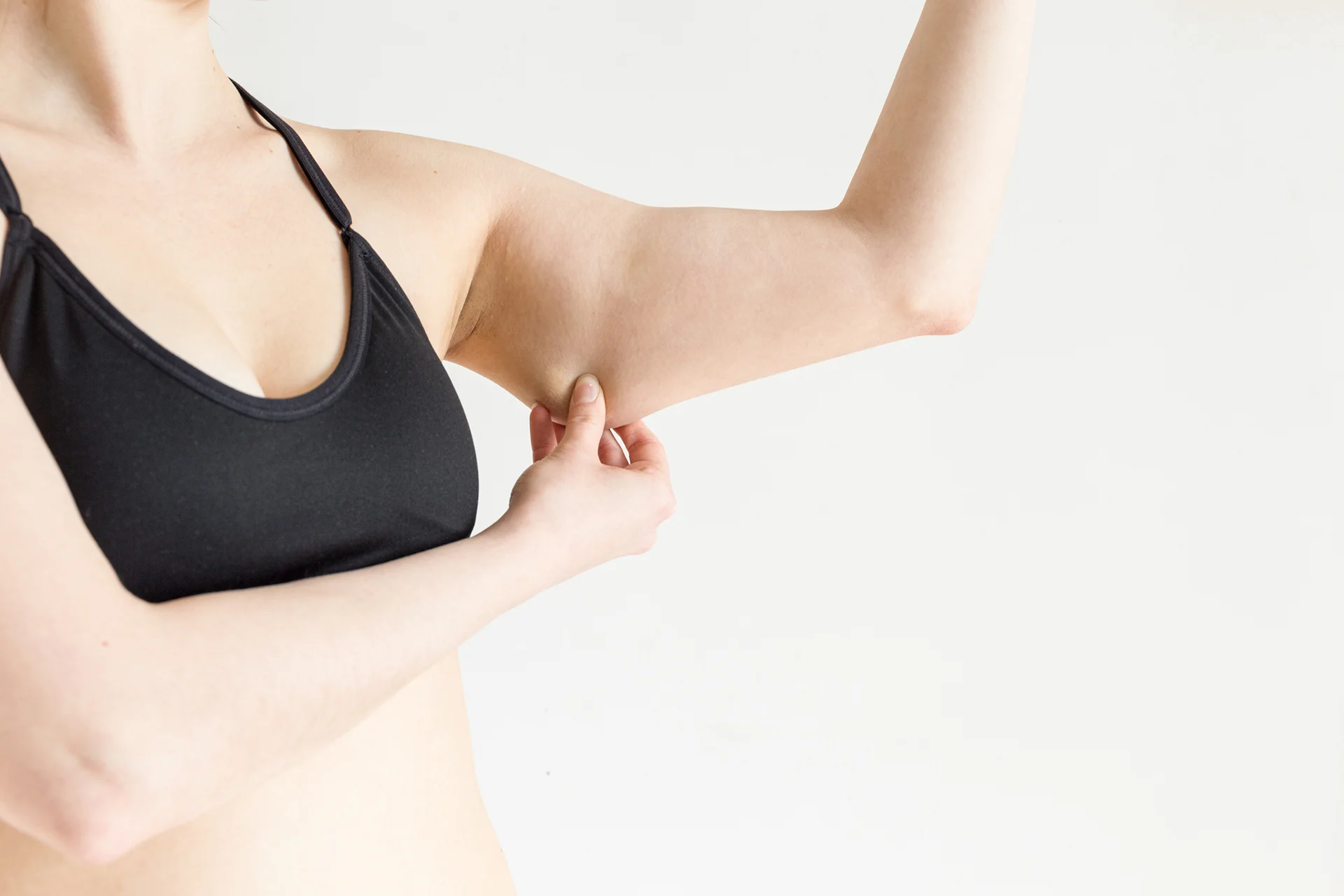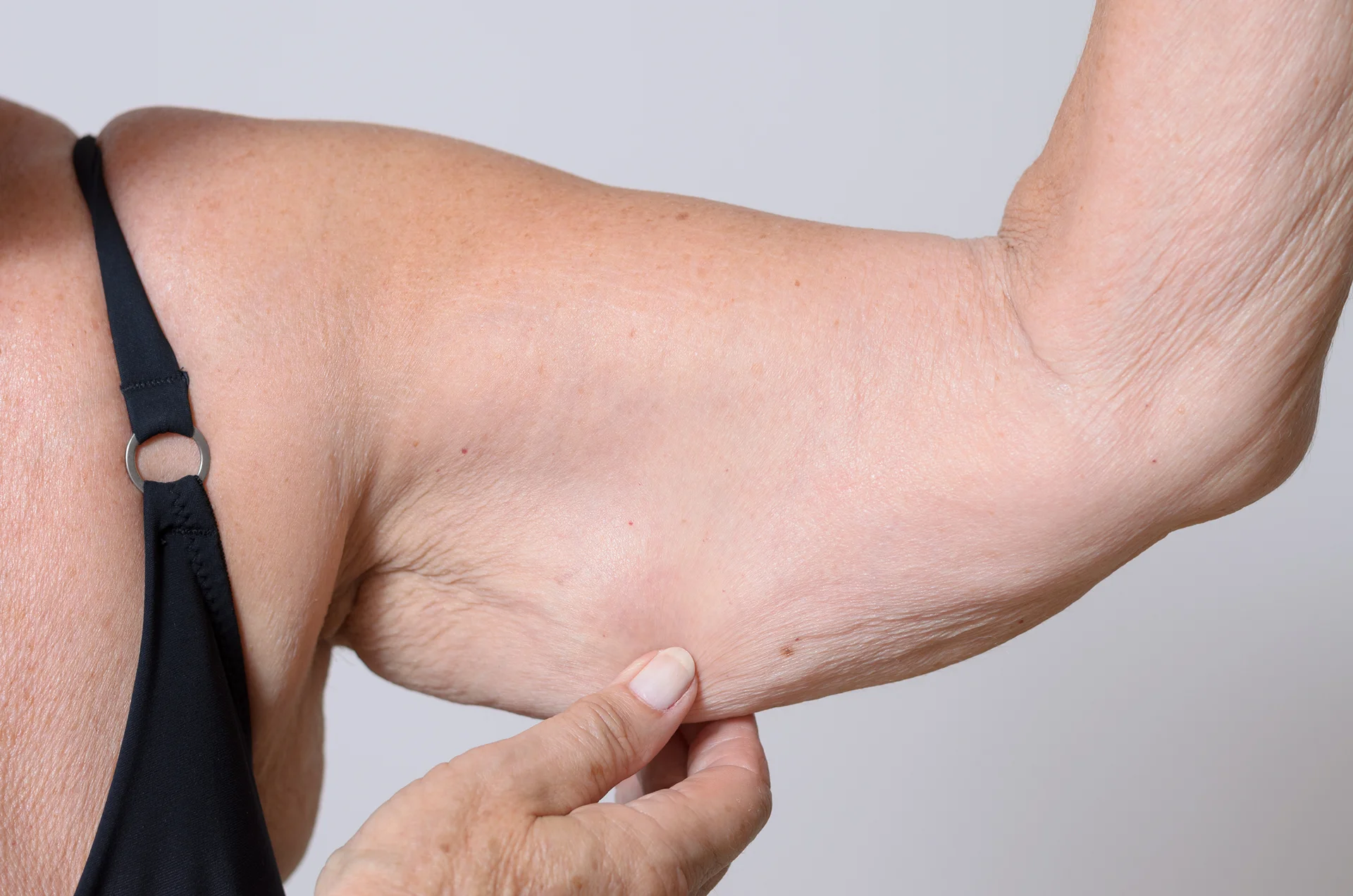A Guide to Postoperative Complications and How to Prevent Excess Fibrosis
Liposuction is one of the most popular cosmetic procedures for removing excess fat and reshaping specific areas of the body like the arms. According to CNN, liposuction has overtaken the place of breast augmentation as the most popular cosmetic surgery in the world accounting for 14.8% of cosmetic surgeries performed, where the latter fell at 13%.
While arm liposuction can provide excellent aesthetic improvements, it does carry risks including fibrosis or hardened scar tissue under the skin.
Fibrosis after liposuction is a common issue that patients need to be aware of. By understanding what causes fibrosis, the symptoms, and ways to prevent and treat it, patients can take proactive steps for optimal recovery after arm lipo.
Arm Liposuction and Its Benefits
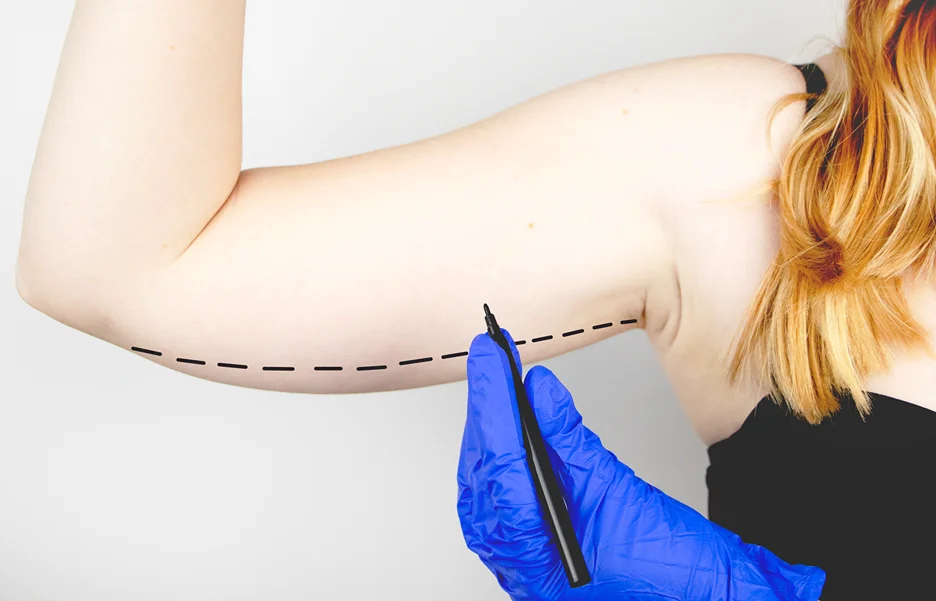
Arm liposuction, also known as brachioplasty, is a cosmetic procedure that uses liposuction to remove excess fat from the upper arms. During the procedure, a thin tube called a cannula is inserted through small incisions in the inner arm area.
The cannula is attached to a vacuum-powered suction device that breaks up and suctions out fat cells. Some potential benefits of arm liposuction include:
- Improved arm contour and definition by removing excess fat deposits
- Toned, slimmer appearance to the upper arms
- Can help address “batwing” or “bingo wing” deformities caused by loose skin and fat
- Shorter recovery time compared to traditional arm lift surgery
- Lasting fat reduction results when a healthy diet and exercise are maintained after surgery
The recovery period is usually 1-2 weeks with some bruising and swelling. Most patients are able to return to work within a week. Risks include bleeding, infection, asymmetry, and potential contour irregularities.
Potential Risks and Complications of Arm Liposuction
While arm liposuction can provide aesthetic improvements, it does come with risks like any surgical procedure. The most common risks and complications include:
| Risk | Description |
| Fibrosis | Formation of excess fibrous scar tissue under the skin that can cause firmness, contour irregularities, and asymmetry |
| Hypertrophic scarring | Thick, wide scars that are raised above the surrounding skin |
| Seroma | Accumulation of fluid under the skin that may require drainage |
| Hematoma | Collection of blood under the skin that may require drainage |
| Nerve damage | Injury to sensory nerves that can cause numbness or altered sensations |
| Skin necrosis | Death of skin tissue that results in an open wound requiring debridement and revisions |
| Contour deformity | Irregularities or depressions in the contour due to poor technique or complications |
| Swelling and bruising | Temporary swelling and bruising of the skin that resolves with time |
| Recurrent looseness of skin | Loose, sagging skin that recurs after a period of time due to elasticity issues |
| Fat embolism | Blockage of blood vessels by fat globules that can be life-threatening |
| Drop in body temperature | Decrease in core body temperature during longer, more complex procedures |
However, some degree of complications like fibrosis are common even with proper surgical technique.
Choose Board-Certified Plastic Surgeon Dr. Darren M. Smith To Reduce Risks and Achieve Optimal Results!
What is Fibrosis?
Fibrosis is a medical term that refers to the formation of excess fibrous connective tissue in an organ or tissue in a reparative or reactive process.
It is the body’s response to injury or damage and involves the buildup of collagen fibers in tissues. This thickened, scar-like tissue replaces normal tissue and disrupts the normal function of the affected organ or tissue.
There can be symptoms of fibrosis after arm liposuction. These include:
- Localized pain near the incision site on the arm
- Uneven skin texture or appearance on the arm
- Hard, thickened areas under the skin of the arm
- Loss of light touch sensation or numbness in the arm
The symptoms typically appear within 3 months after liposuction surgery as the body tries to repair itself. Manual lymphatic drainage massage can help reduce fibrosis symptoms by improving blood circulation and draining excess fluid from the area.
Causes of Fibrosis After Arm Liposuction
Fibrosis after liposuction is caused by trauma to the underlying tissues during the procedure. The formation of fibrous tissue is part of the body’s normal healing process after surgery or injury. Specifically:
- Liposuction can cause trauma to the tissues under the skin, which triggers the body’s wound healing response and leads to fibrosis
- Fibrosis starts developing 3-4 days after liposuction and can continue for 2-4 weeks as the body heals the damaged tissues
- Other potential causes include problems with compression garments post-surgery, retracting scar tissue, genetics, medical conditions, medications/supplements, and poor liposuction technique
- Fibrosis is a normal part of healing but can be guided and reduced through proper post-op care like massage and compression garments
How to Prevent Fibrosis After Arm Liposuction in 7 Steps

While some degree of fibrosis is normal as the tissue heals, excessive fibrosis can lead to unsightly bumps, hardness, or irregularities in the skin. Preventing fibrosis requires diligent aftercare. Here are some tips:
- Wear Compression Garments: Compression garments like sleeves or wraps should be worn over the treated areas 24/7 for the first 1-2 weeks, then during the day for several more weeks. Compression helps reduce swelling and prevents fibrosis by supporting the healing tissues. Make sure garments fit snugly but not too tight.
- Perform Lymphatic Drainage Massage: Manual lymphatic drainage is a specialized light massage technique that encourages fluid drainage and reduces fibrosis. Sessions can begin a few days after surgery and should be continued for 2-4 weeks. Seek instruction from Dr. Smith or from your massage therapist.
- Use Topical Creams: Creams containing ingredients like caffeine, retinol, or aminophylline can help break down fibrotic tissue when massaged into the treatment areas. Apply twice daily for 1-2 months. Check with Dr. Smith before use.
- Supplements: He may recommend supplements to support healing and reduce inflammation. Some options include bromelain, vitamin C, or Arnica. Do not take supplements before discussing with the surgeon.
- Nutrition: Eat a balanced diet emphasizing whole foods and proteins to provide nutrients for healing. Avoid sodium, alcohol, and processed foods which can promote swelling. Stay hydrated.
- Activity: Follow Dr. Smith’s instructions for increasing activity gradually. Too much motion too soon can worsen fibrosis. Light walking is usually recommended first.
- Follow Up Appointments: Keep all follow up visits with Dr. Smith to monitor for any excessive fibrosis and determine if further treatment is needed. Report any noticeable hard areas.
Schedule a Consultation with Dr. Smith to Receive Personalized Advice on Preventing Fibrosis
What are the Treatments for Arm Lipo Fibrosis?
If fibrosis develops after arm liposuction, there are several treatment options available to help reduce and improve the condition:
Massage Therapy
Regular massage of the affected area can help break up fibrotic tissue and scar tissue adhesions. Massage improves mobility and range of motion in the tissue. Using a topical cream or oil during massage may further help soften and loosen fibrotic areas. Massage techniques like myofascial release, cross-fiber friction, and trigger point release are often used.
Low-Level Laser Therapy
Low-level laser or light therapy applies targeted wavelengths of light to the affected area. This helps reduce inflammation and edema, increase blood flow, and stimulate cellular renewal to break down fibrotic tissue. Multiple sessions are usually needed for best results.
Corticosteroid Injections
Direct steroid injections into localized areas of fibrosis can help reduce inflammation and prevent further scar tissue formation. However, injections carry risks like skin discoloration, fat atrophy, and necrosis, so they should only be administered by an experienced physician.
Autologous Fat Grafting
Transferring a patient’s own purified fat to areas of fibrosis may help regenerate healthy tissue. The fat graft provides regenerative cells and growth factors. Though results seem promising, more research is still needed on autologous fat grafting for liposuction-related fibrosis.
Stem Cell Therapy
Stem cell therapy shows potential for reducing fibrosis by promoting regeneration of healthy tissue. Stem cells from a patient’s fat or bone marrow can be isolated and injected into affected areas. More clinical trials are still needed to establish standardized practices.
Surgical Removal
In severe cases of fibrosis, surgical removal of the hardened fibrotic tissue may provide relief when other treatments have not been effective. However, excision carries risks of further scar tissue formation. Aggressive cases may require revisions or dermolipectomy procedures to remove excess skin.
Medications
Oral drugs like pentoxifylline, vitamin E, or collagenase have been used to try reducing fibrosis, but there is limited evidence on their efficacy for liposuction-related fibrosis specifically.
Radiation Therapy
External beam radiation is sometimes used to soften tissue affected by severe fibrosis and contractures. However, this involves many treatments and risks, so it is usually only considered after exhausting other options.
The earlier any treatment is started after fibrosis develops, the better the expected results. Seeking medical advice from Dr. Smith is recommended to discuss the best options.
Work Closely With Dr. Smith for Optimal Recovery
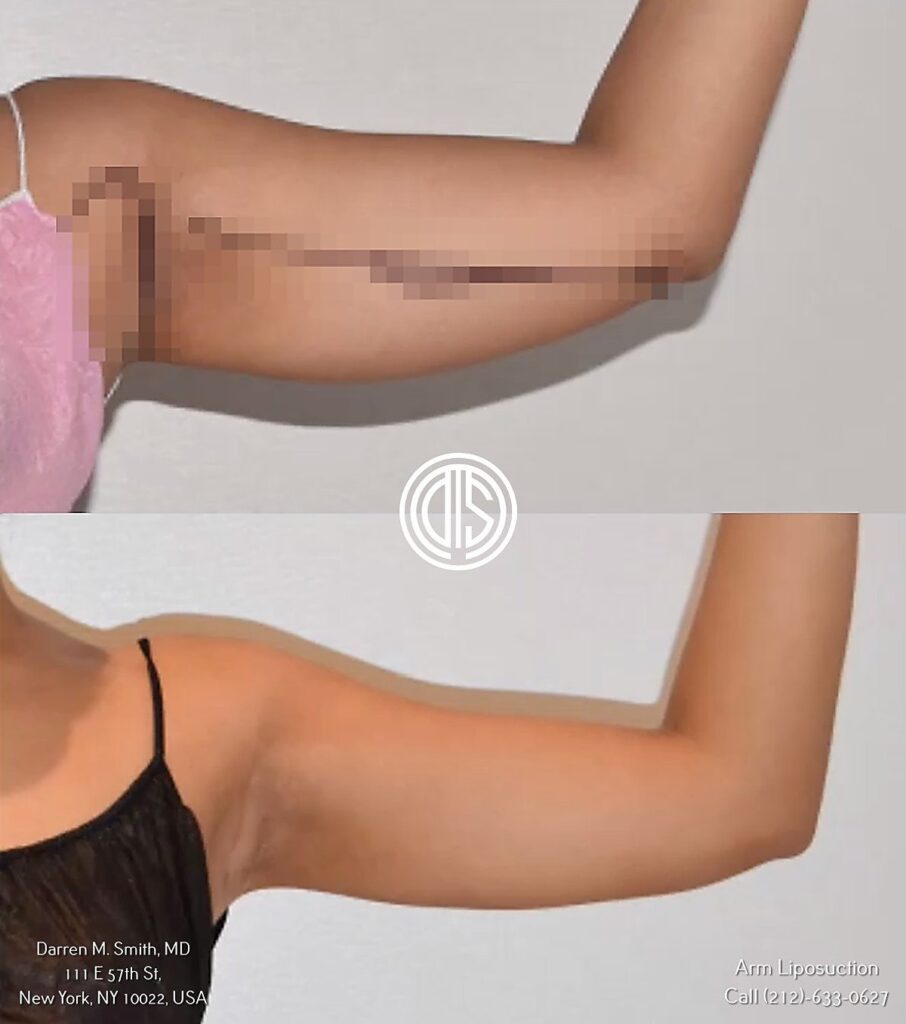
While some degree of fibrosis is expected, patients can take proactive steps to help prevent and manage excessive fibrosis during recovery.
If you are considering arm liposuction to achieve slimmer, better contoured arms, be sure to consult with a board-certified plastic surgeon to understand all the benefits and risks including potential fibrosis.
Choose a surgeon like Dr. Smith who has extensive training in liposuction techniques and provides comprehensive pre and post-operative care instructions tailored to your needs for the best possible results and experience.
To schedule your consultation, call us at +1212 633-0627 or book an appointment online.

